Study on the Nonlinear Conductivity of SiC/ZnO/Epoxy Resin Micro- and Nanocomposite Materials
Abstract
:1. Introduction
2. Experimental Materials and Methods
2.1. Raw Materials
2.2. Specimen Preparation
- (1)
- EP was preheated in a heating jacket at 80 °C for 30 min to improve its liquidity. Then, appropriate amounts of EP and the selected inorganic filler, as shown in Table 1, were placed in a three-mouth bottle, and evenly mixed by a magnetic stirrer and ultrasonic dispersion.
- (2)
- After stirring for 3 h, an appropriate curing agent (Methylhexahydrophthalic anhydride, C9H12O3) and promoter (pyridine, C5H5N) were added, and magnetic stirring was continued.
- (3)
- The above mixture was degassed, poured into a mold, and solidified in a vacuum oven at 70 °C for 1 h, and the mold was removed after natural cooling to complete the composite material preparation.
2.3. Test Method
3. Results and Discussion
3.1. Relationship between Electric Field Intensity and Conductance of Nonlinear-Conductance Materials
3.2. Effect of Inorganic Filler Concentration on the Conductivity of EP Composites
3.3. Effect of Inorganic Filler Type on the Conductivity of EP Composites
3.4. Effect of the Ratio of SiC and ZnO Inorganic Fillers on the Conductivity of EP Composites
4. Conclusions
- (1)
- At the same electric field intensity, the conductivity of SiC/EP composites is greater than that of micro-ZnO/EP composites, which is greater than that of nano-ZnO/EP composites.
- (2)
- The composite conductivity increases with increased inorganic filler content. At equal content levels, the nonlinear coefficients of SiC/EP composites are greater than those of micro-ZnO/EP and nano-ZnO/EP composites.
- (3)
- When the ratio of micro-ZnO to SiC is 2:3, the nonlinear coefficient of the composite material above the threshold field intensity is maximized at 3.506, which is significantly larger than that of any single-filler sample. Compared with the SiC/EP, micro-ZnO/EP, and nano-ZnO/EP composite materials with equal filler content levels, the nonlinear coefficient is greater by a factor of 0.82, 2.48, and 5.01, respectively. The threshold field intensity of the micro-ZnO and SiC micro/nanocomposite material is clearly reduced.
Author Contributions
Funding
Conflicts of Interest
References
- He, J.; Xie, J.; Hu, J. Progress of nonlinear polymer composites for improving nonuniform electrical fields. High Volt. Eng. 2015, 40, 637–647. [Google Scholar]
- LarsGöran, V.; Perry, W. A new termination for underground distribution. IEEE Trans. Power Appar. Syst. 1967, 86, 1129–1135. [Google Scholar]
- Roberts, A. Stress grading for high voltage motor and generator coils. Electr. Insul. Mag. IEEE 1995, 11, 26–31. [Google Scholar] [CrossRef]
- He, J.; Yang, X.; Hu, J. Progress of theory and parameter adjustment for nonlinear resistive field grading materials. Trans. China Electrotech. Soc. 2017, 32, 44–60. [Google Scholar]
- Donzel, L.; Greuter, F.; Christen, T. Nonlinear resistive electric field grading, part 2: Materials and applications. IEEE Electr. Insul. Mag. 2011, 27, 18–29. [Google Scholar] [CrossRef]
- Lewis, T.J. Interfaces are the dominant feature of dielectrics at the nanometric level. IEEE Trans. Dielectr. Electr. Insul. 2004, 12, 737–738. [Google Scholar] [CrossRef]
- Wang, Y.; Yin, Y.; Li, X. Study of the space charge behaviour in polyethylene doped with nano-MgO. Electr. Wire Cable 2009, 3, 20–23. [Google Scholar]
- Chen, S.; Cheng, X.; Wang, X. Study of space charge distribution and volume resistivity in composite of polyethylene/nano zinc oxide. Insul. Mater. 2007, 40, 48–51. [Google Scholar]
- Wang, X.; Cheng, X.; Chen, S. Dielectric properties of the composites of nano-ZnO/low-density polyethylene. Proc. CSEE 2008, 28, 13–19. [Google Scholar]
- Gong, B.; Zhang, Y.; Zheng, F. Influence of nano-TiO2 doped low density polyethylene on space charge behavior. Chin. J. Mat. Res. 2005, 19, 519–524. [Google Scholar]
- Chen, Q.; Shang, N.; Qin, Y.; Wei, X.; Qin, J. Non-linear conductivity characteristic of SiC/LSR nanocomposite. High Volt. Eng. 2017, 43, 3521–3527. [Google Scholar]
- Wang, F.; Zhang, P.; Gao, M. Research on the nonlinear conductivity characteristics of nano-SiC/silicone rubber composites. Acta Phys. Sin. 2014, 63, 356–363. [Google Scholar]
- Guo, W.; Han, B.; Li, Z. Study on non-linear conductivity characteristic of polyethylene/carborundum composites. J. Funct. Mater. 2010, 41, 436–438. [Google Scholar]
- Chen, Q.; Liu, H.; Zhuge, X.; Wei, X. Analysis of dielectric properties and electric field homogenization of modified insulation pressboard based on nano SiC. Electr. Mach. Control 2014, 18, 79–84. [Google Scholar]
- Liu, C.; Zheng, X.; Bie, C. Research of preparation and non-linear conductivity modification of doped ZnO/epoxide resin material. Trans. China Electrotech. Soc. 2016, 31, 24–30. [Google Scholar]
- Wang, Q.; Li, Z.; Yin, Y. The effect of micro and nano alumina on the ability of impedance on the electrical tree of epoxy resin. Trans. China Electrotech. Soc. 2015, 30, 255–260. [Google Scholar]
- Li, H.; Wang, C.; Liu, L. Experimental study on nonlinear conduction mechanism of epoxy-based nanocomposite with low content of graphene filler. High Volt. Eng. 2018, 44, 812–820. [Google Scholar]
- Heid, T.; Fréchette, M.; David, E. Epoxy/BN micro- and submicro-composites: Dielectric and thermal properties of enhanced materials for high voltage insulation systems. IEEE Trans. Dielectr. Electr. Insul. 2015, 22, 1176–1185. [Google Scholar] [CrossRef]
- Zhou, Q.; Wu, K.; Liao, R. Space charge distribution of nano-SiC/low density polyethylene composite. High Volt. Eng. 2012, 38, 2669–2674. [Google Scholar]
- Bellucci, S.; Coderoni, L.; Micciulla, F. The electrical properties of epoxy resin composites filled with Cnts and carbon black. J. Nanosci. Nanotechnol. 2011, 11, 9110–9117. [Google Scholar] [CrossRef]
- Bal, S. Experimental study of mechanical and electrical properties of carbon nanofiber/epoxy composites. Mater. Des. 2010, 31, 2406–2413. [Google Scholar] [CrossRef]
- Hu, C.; Zhao, Y.; Gao, J. Organic montmorillonite /silicon carbide micro-nano-crystalline composite anti-corona varnish. Electr. Mach. Control 2015, 19, 45–49. [Google Scholar]
- Hu, C.; Zhao, Y.; Hou, H. 600 mesh silicon carbide corona protection varnish with epoxy/OMMT nano-composite adhesive. J. Wuhan Univ. Technol. Mater. 2016, 31, 818–822. [Google Scholar] [CrossRef]
- Yang, H.; Cai, W.; Lv, L. Preparation of zinc oxide particles by surfactant-assisted hydrothermal method. Rare Met. Mater. Eng. 2012, 41, 117–119. [Google Scholar]
- Yu, F.; Zhao, X.; Wang, J. Properties and preparation of polylactide/montmorillonite nanocomposites by melt blending. Plast. Sci. Technol. 2010, 38, 32–36. [Google Scholar]
- Tanaka, T.; Kozako, M.; Fuse, N. Proposal of a multi-core model for polymer nanocomposite dielectrics. IEEE Trans. Dielectr. Electr. Insul. 2005, 12, 669–681. [Google Scholar] [CrossRef]
- Roy, M.; Nelson, J.K.; MacCrone, R.K. Polymer nanocomposite dielectrics-the role of the interface. IEEE Trans. Dielectr. Electr. Insul. 2005, 12, 629–643. [Google Scholar] [CrossRef]
- Yang, J.; Liu, C.; Shi, K. Application of percolation theory for study of composite conductive polymeric materials. Chem. Intermed. 2006, 1, 13–17. [Google Scholar]
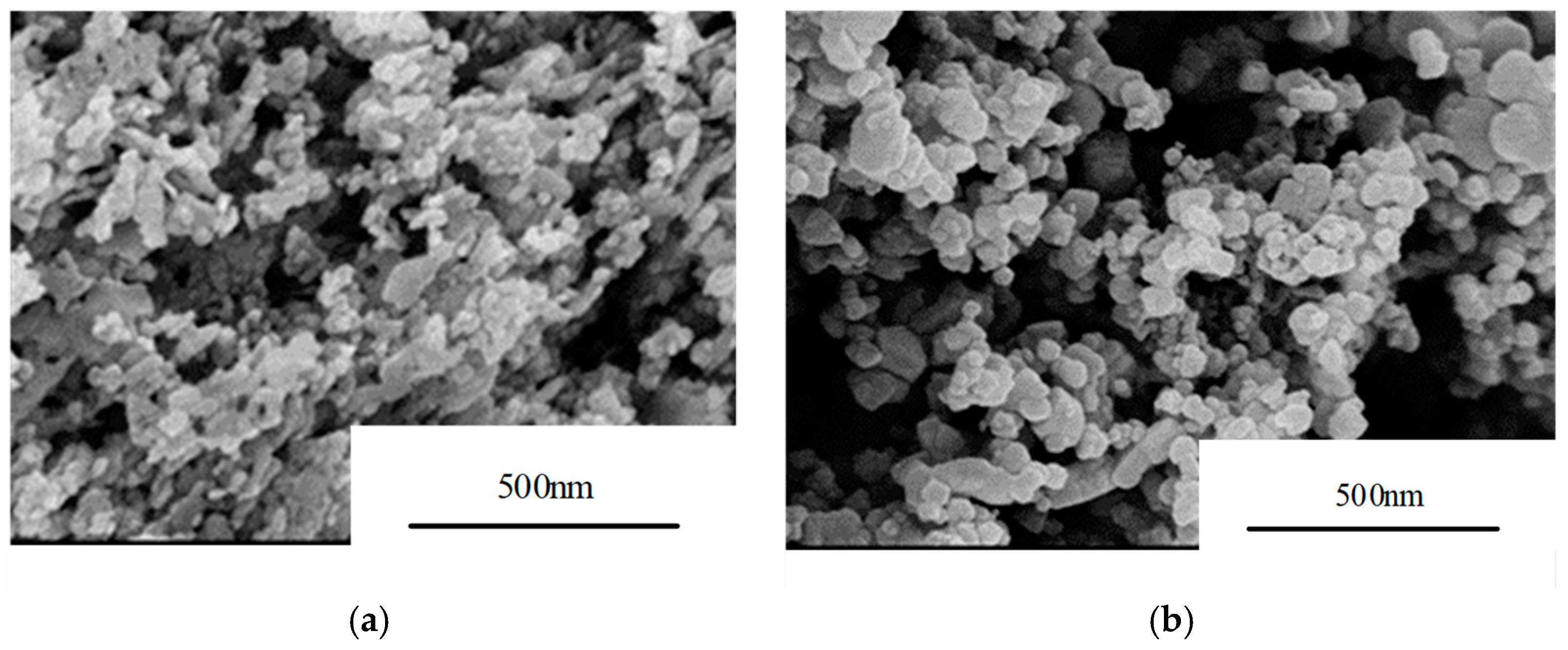

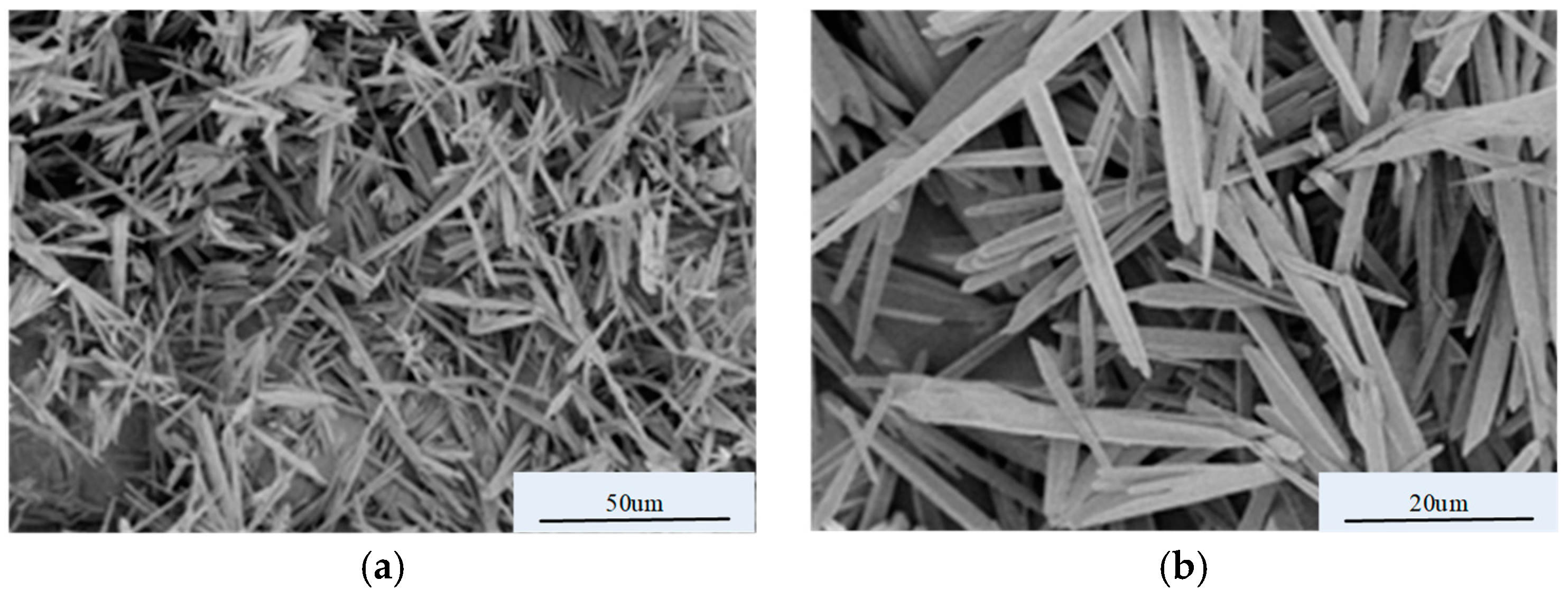
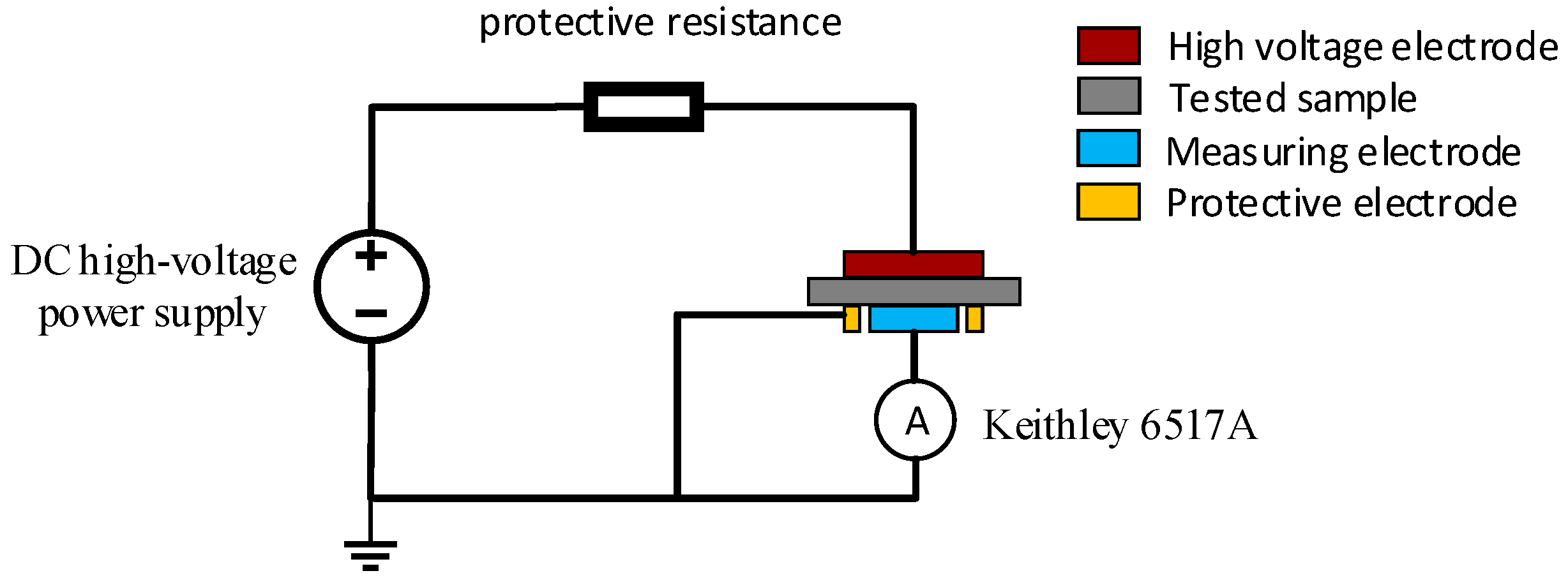
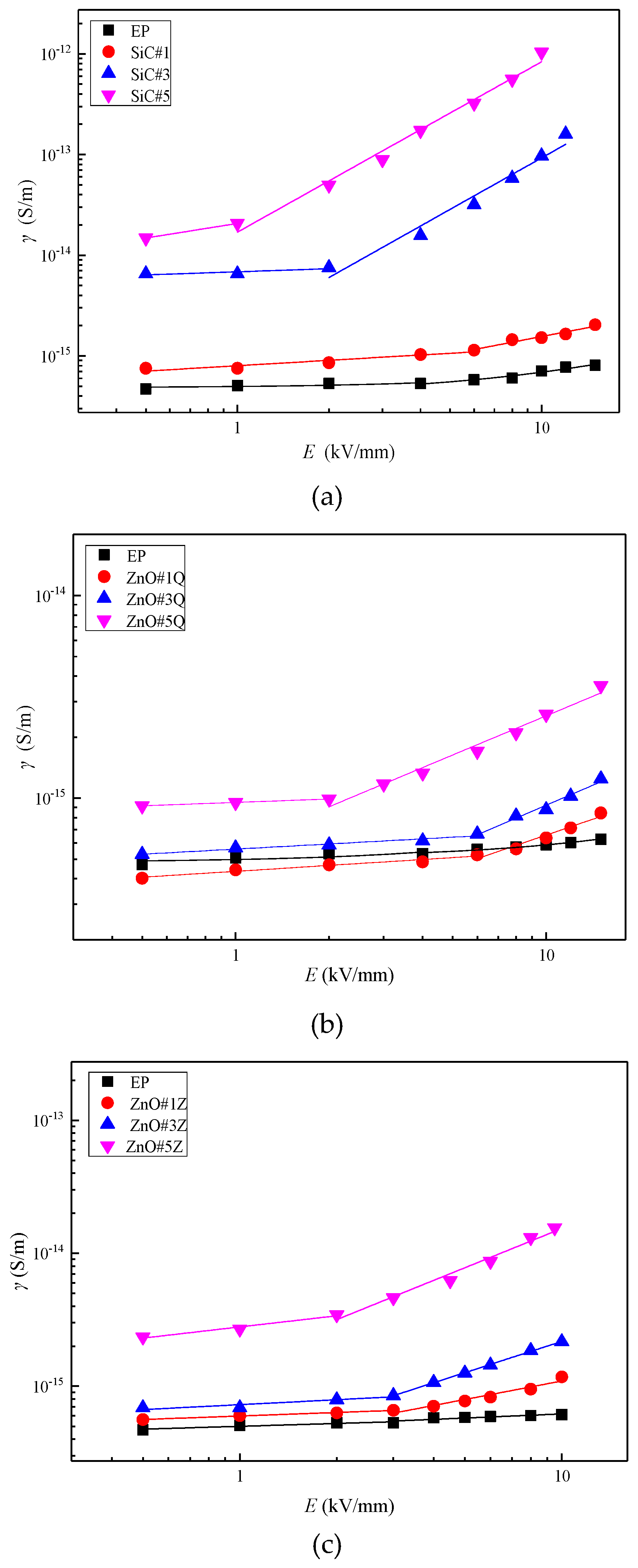
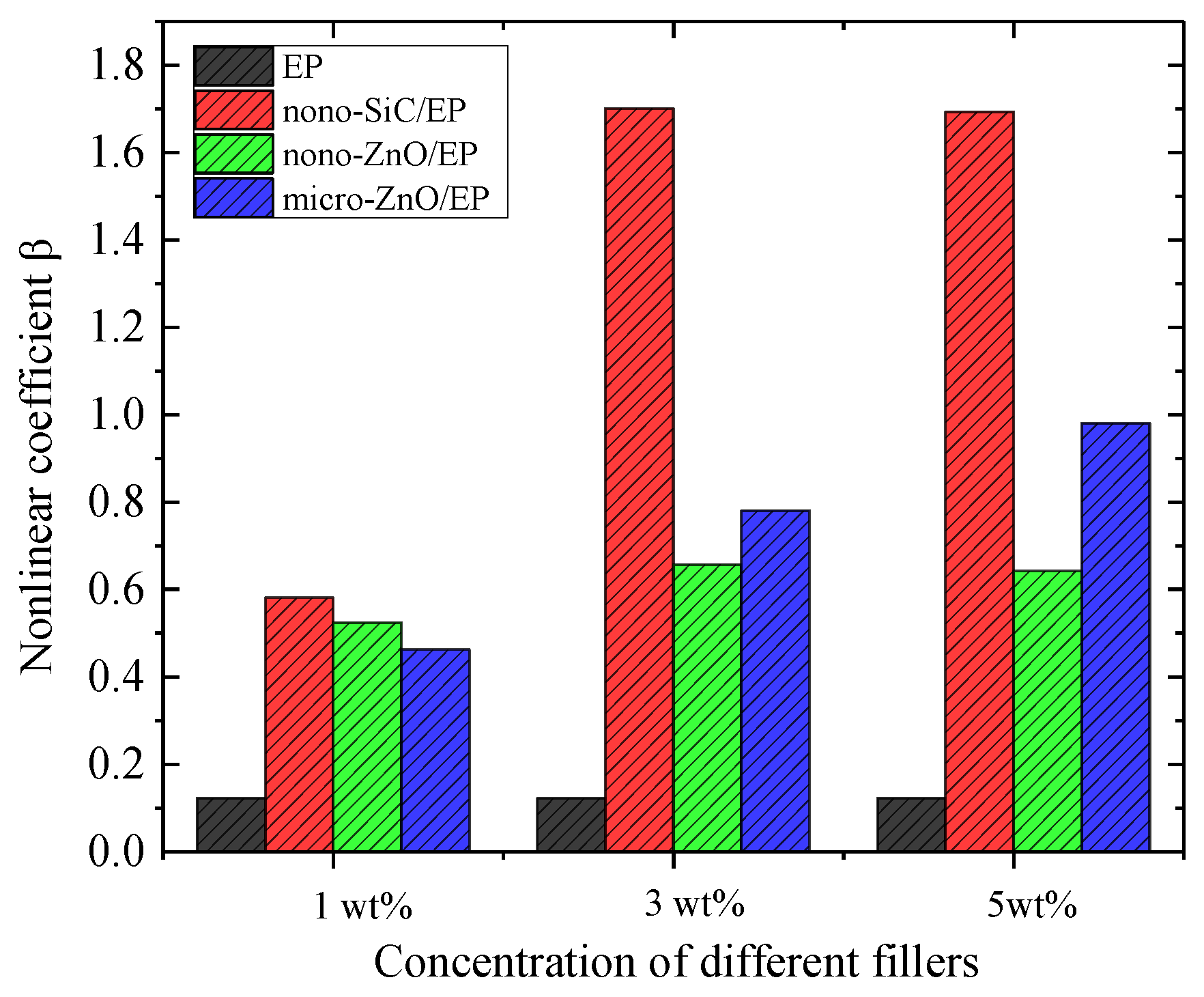

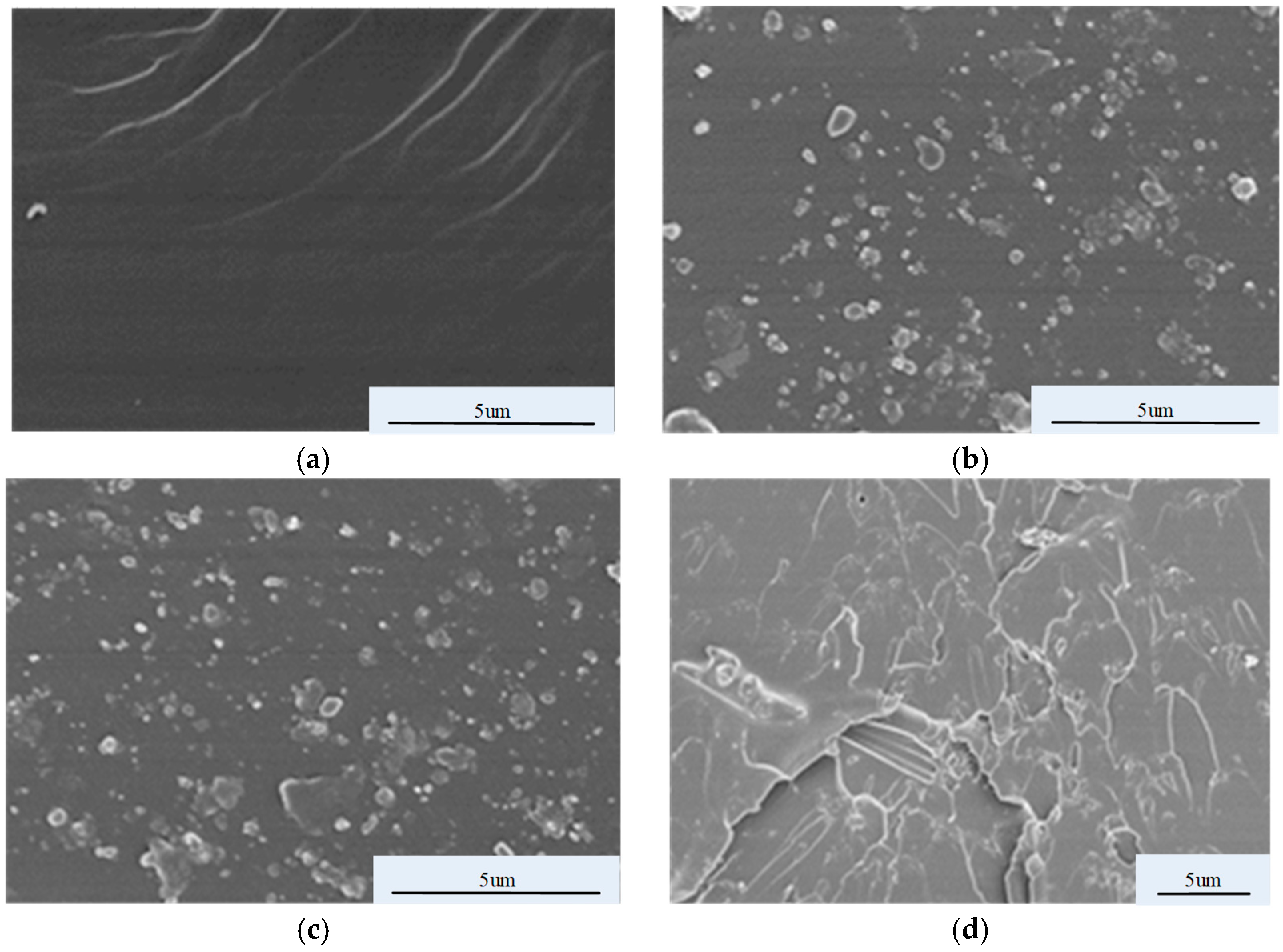
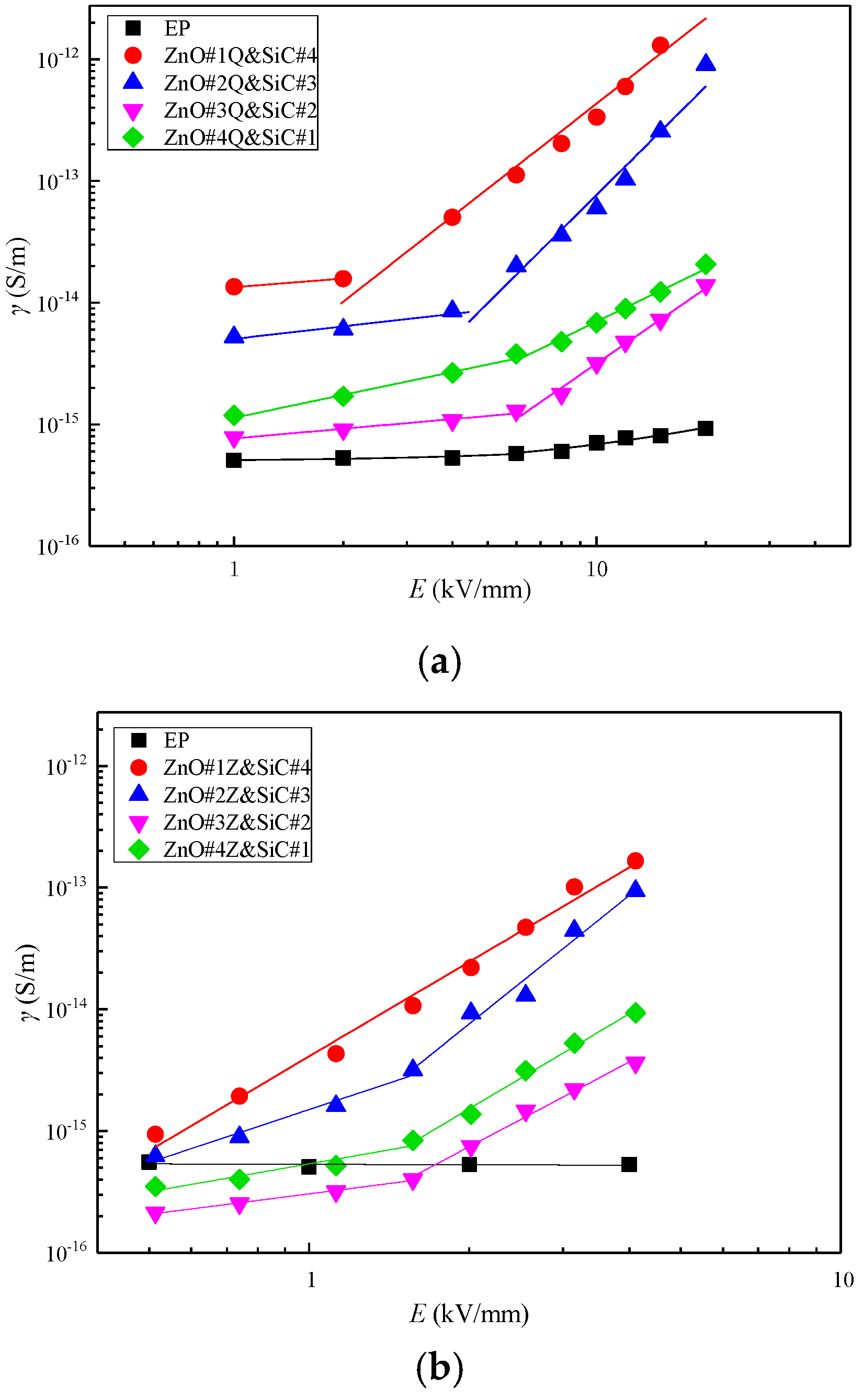
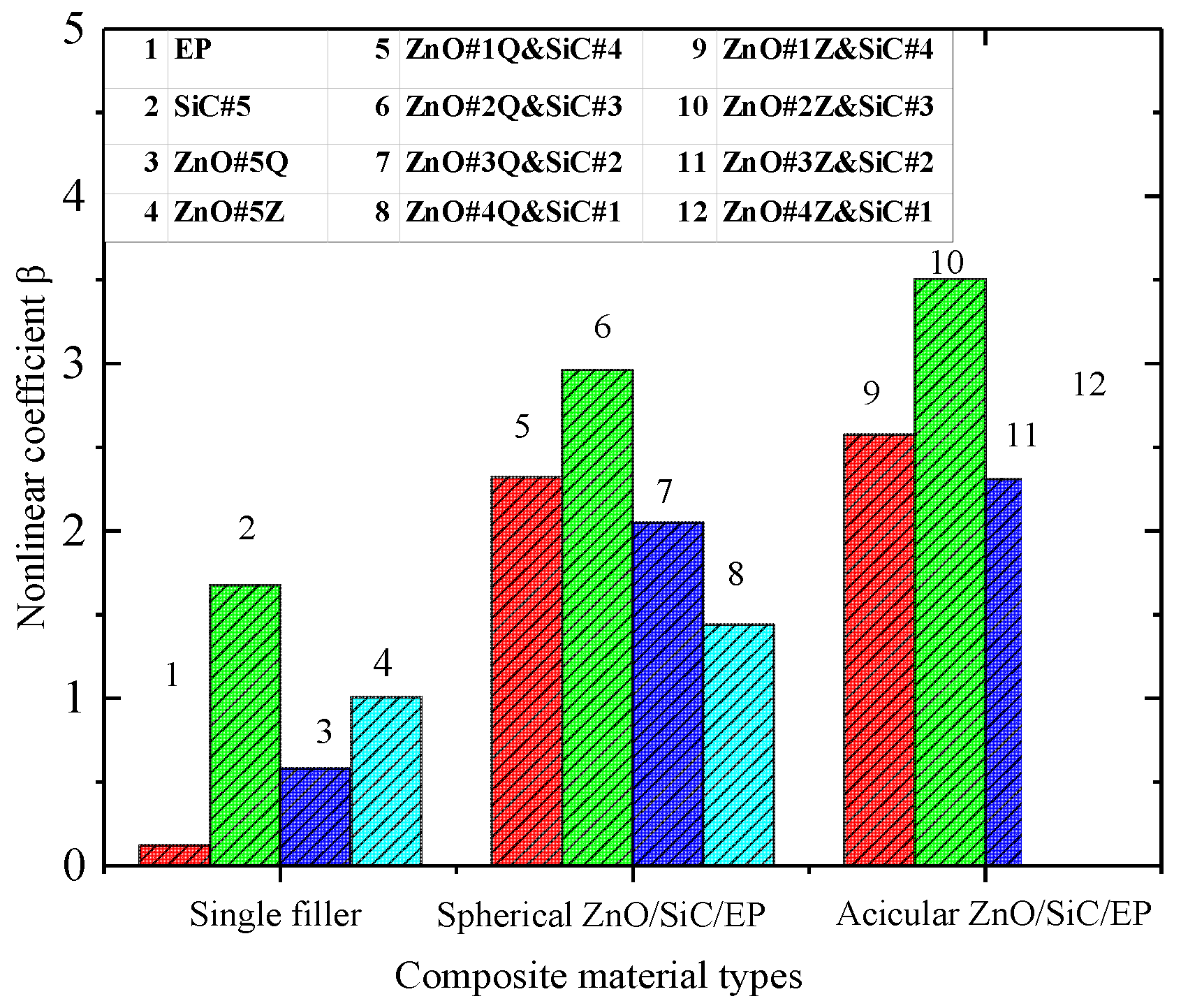
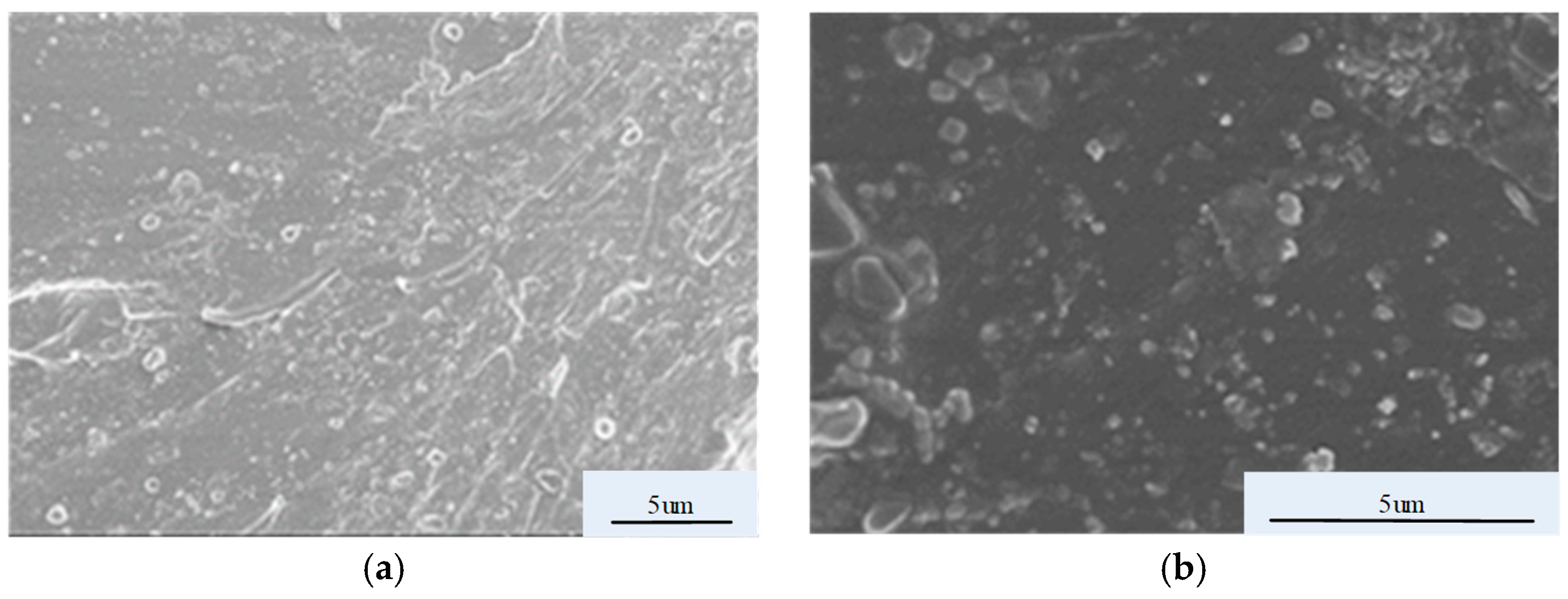
| Sequence Number | Simplified Name of Sample | Nano-ZnO Mass Fraction (wt%) | Micro-ZnO Mass Fraction (wt%) | Nano-SiC Mass Fraction (wt%) | Sample Category |
|---|---|---|---|---|---|
| 1 | EP | - | - | - | EP |
| 2 | ZnO#1Q | 1 | - | - | ZnO/EP nanocomposite |
| 3 | ZnO#3Q | 3 | - | - | |
| 4 | ZnO#5Q | 5 | - | - | |
| 5 | ZnO#1Z | - | 1 | - | ZnO/EP microcomposite |
| 6 | ZnO#3Z | - | 3 | - | |
| 7 | ZnO#5Z | - | 5 | - | |
| 8 | SiC#1 | - | - | 1 | SiC/EP nanocomposite |
| 9 | SiC#3 | - | - | 3 | |
| 10 | SiC#5 | - | - | 5 | |
| 11 | ZnO#1Q&SiC#4 | 1 | - | 4 | SiC/ZnO/EP nanocomposite |
| 12 | ZnO#2Q&SiC#3 | 2 | - | 3 | |
| 13 | ZnO#3Q&SiC#2 | 3 | - | 2 | |
| 14 | ZnO#4Q&SiC#1 | 4 | - | 1 | |
| 15 | ZnO#1Z&SiC#4 | - | 1 | 4 | SiC/ZnO/EP micro/nanocomposite |
| 16 | ZnO#2Z&SiC#3 | - | 2 | 3 | |
| 17 | ZnO#3Z&SiC#2 | - | 3 | 2 | |
| 18 | ZnO#4Z&SiC#1 | - | 4 | 1 |
© 2019 by the authors. Licensee MDPI, Basel, Switzerland. This article is an open access article distributed under the terms and conditions of the Creative Commons Attribution (CC BY) license (http://creativecommons.org/licenses/by/4.0/).
Share and Cite
Hu, H.; Zhang, X.; Zhang, D.; Gao, J.; Hu, C.; Wang, Y. Study on the Nonlinear Conductivity of SiC/ZnO/Epoxy Resin Micro- and Nanocomposite Materials. Materials 2019, 12, 761. https://doi.org/10.3390/ma12050761
Hu H, Zhang X, Zhang D, Gao J, Hu C, Wang Y. Study on the Nonlinear Conductivity of SiC/ZnO/Epoxy Resin Micro- and Nanocomposite Materials. Materials. 2019; 12(5):761. https://doi.org/10.3390/ma12050761
Chicago/Turabian StyleHu, Haitao, Xiaohong Zhang, Dingping Zhang, Junguo Gao, Chunxiu Hu, and Yayun Wang. 2019. "Study on the Nonlinear Conductivity of SiC/ZnO/Epoxy Resin Micro- and Nanocomposite Materials" Materials 12, no. 5: 761. https://doi.org/10.3390/ma12050761





